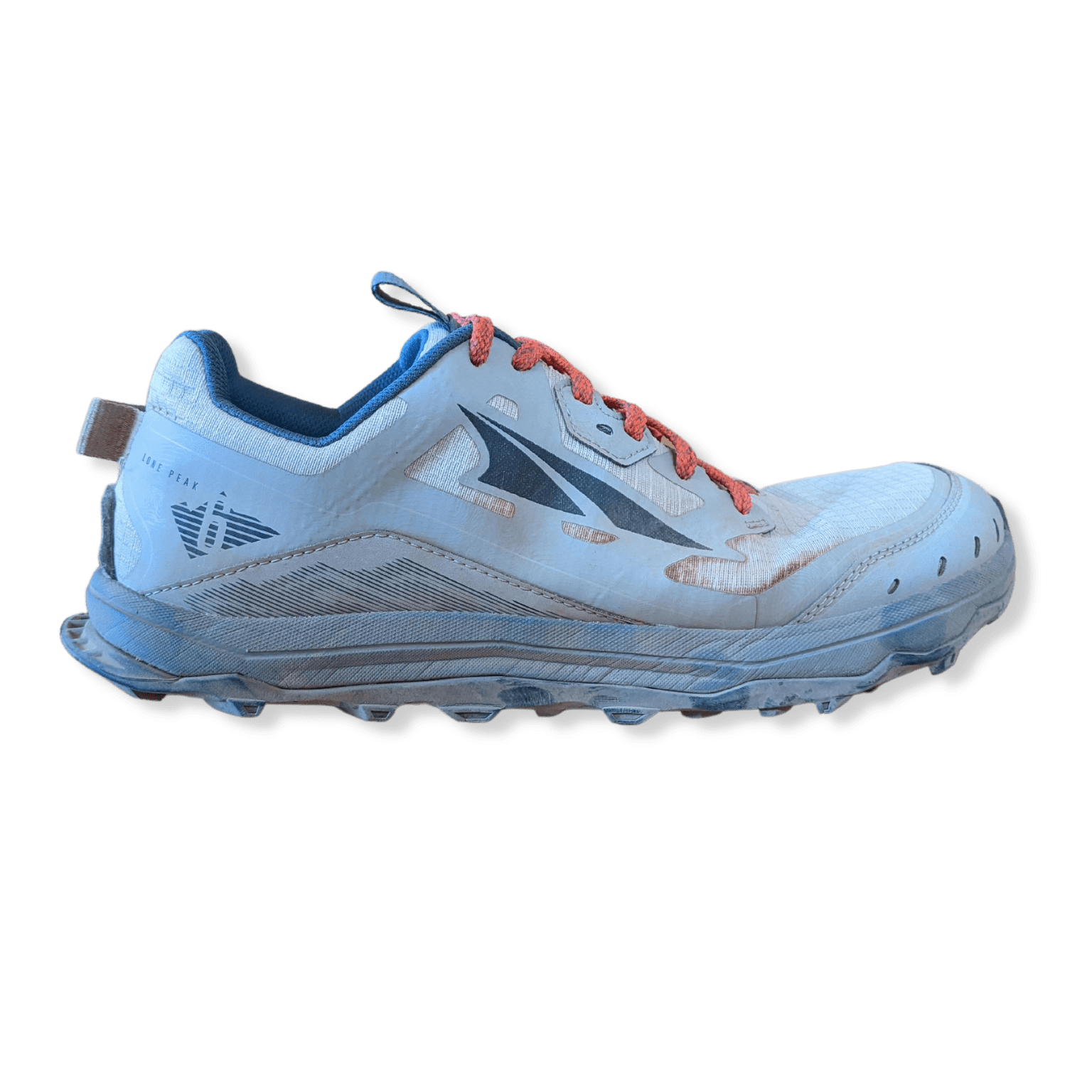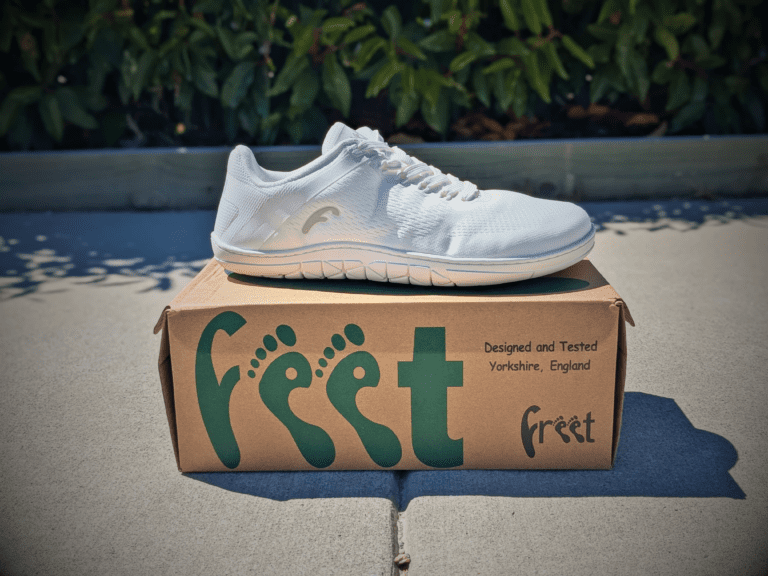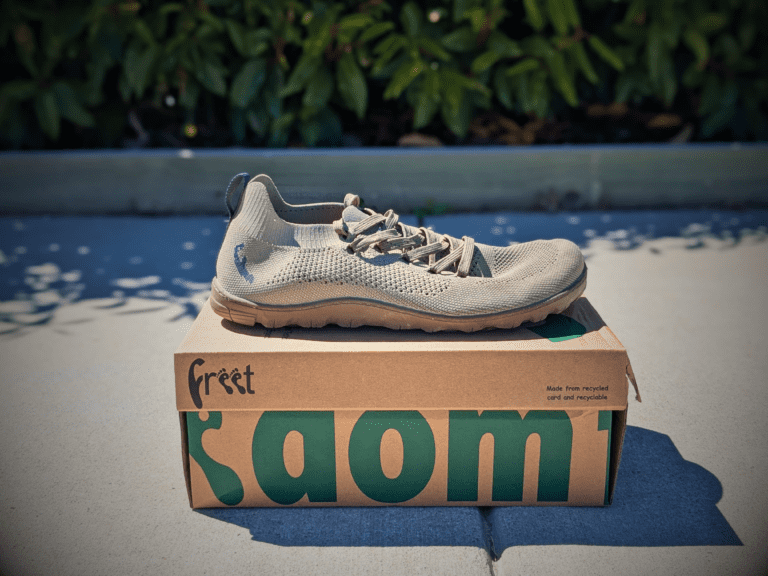The Lone Peak 7 is now available!
If you want the latest and greatest, go and check out our review on the Lone Peak 7. There’s a few decent updates, but still the Lone Peak 6 wouldn’t disappoint.
The Altra Lone Peak. Pretty much the shoe that started the colossal upwards trend for Altra.
Why was it received so well?
It was a step away from the traditional shoes at the time—a real alternative for runners that hated squeezing their wide feet into tiny Nike shoes.
Lucky for the old-school Altra lovers, version 6 is still true to the Lone Peak heritage. But is that good enough for today’s running shoe world? Let’s jump into the review to find out!
Affiliate Disclosure: By clicking through the links on this page and purchasing the products, you’ll be helping me out. This is done because I receive a kickback from the sellers at no extra cost to you! Thank you so much for supporting us!

Altra Lone Peak
Cushioned but still nimble for those mid to long-distance races
AltraRunning.com
(30-day return window)
$140
Psstttt, you already likely know this, but the Lone Peak is not a barefoot shoe. However, it does have some shared barefoot DNA. Why has the Lone Peak (and a few other Altras) made it onto a barefoot site? Because I’m not convinced we all have to be 100% barefoot. Performance shoes have their place. And we’re about to see where the Lone Peak sits in the barefoot sphere.
Woahhhh, it’s wide!
Yep, that Lone Peak wide base is here to stay. For some of you, that will be music to your ears. It’s tough to find a shoe with lots of width. It’s also worth mentioning that I reviewed the standard width of the shoe. There is still a wide option if you need that extra room!
It’s not only about the width; the volume of the upper is a godsend for those with larger feet. When shoe companies release a “larger” shoe, they often only change the base width. But the Lone Peak is different. There is a ton of room in the toe box to wiggle your toes, and with the redesigned upper, you can also use various lacing techniques to accommodate high bridges or flat feet.
All this room is not for everyone! I have a relatively average foot (I know, no feet are the same, and nothing is average!), and I found them a little too roomy but could make do. But if you have narrow, low-volume feet like my wife, I can assure you the Lone Peak will not work. Look to the Superior or the Timp for a more snug fit.
Which Altra Shoe is for you?
Take a quick 4-question quiz to identify the perfect Altra running shoe for your feet! You'll get both road and trail options based on your answers!
Gone are the chunky ankle cuffs, but the heel counter remains flexible. If you’ve run in the Lone Peaks of years gone by, you’ll likely remember that they felt….. a little like skater shoes. Oversized foam-filled ankles cuffs filled out the massive exterior, lending themselves to immediate comfort but fast material breakdown. Now the materials are much more refined, making for a sleek, lighter shoe, which should yield a better life span!
That flexible heel lends itself to a perfect heel lock. I’ve said this many times on the blog, but here we go again! An unstructured heel, i.e. a heel without a stiff heel counter, is excellent for locking in the heel. With the Long Peak lacing eyelets, you can implement a lace lock that pulls the ankle and heel material firmly, allowing for a great heel lock!
To be honest, the Lone Peak 6 still feels like old models, with a minor change in the firmness of the midsole.
It’s not super soft, nor is it super hard. It’s juuust right. In versions 1 and 2 of the Lone Peak, you’d be forgiven if you thought you had sponges on your feet. With the Lone Peak 6, the midsole is much firmer and similar to version 5. Likely because they’re using the same old Ego midsole foam. So you will feel a little of the rocks that you run over, but it’ll be nothing that will stop you in your tracks.
Twist it left, right, back, and forth. For a giant shoe, it remains amazingly flexible. If something is missing from many traditional shoe brands, it’s flexibility. The Lone Peak bucks the trend here. Even with a 25mm midsole, it’s possible to twist the shoe like you’re ringing it out. If you’re a barefoot fan, that’ll likely sing to you. Why waste all the barefoot strength with rigid, inflexible shoes? Let your feet do the work!

Flexibility can be a drawback if you’re a sloppy runner. Although it’d be hard to admit that you have bad form, I can assure you that the Lone Peaks will highlight it! Because they are flexible, the upper is relatively forgiving, and the midsole raises you 25mm into the air; if you even start to labor, the Lone Peaks will not come to the rescue. But if we all invest in a little barefoot training, these inefficiencies should lessen over time! (hint hint, Barefoot running is a training tool! Use it!)
If you haven’t got overly broad feet, or your foot is low volume, you will move in the shoe when running on technical surfaces. (Spoiler!)This is why I sold the pair I had in the end. When I was descending on technical surfaces, I was slipping around too much. But not on the rocks, inside the actual shoe! Even though the lockdown on the midfoot works well most of the time, it wasn’t enough on rugged terrain. So just note that you only want the shoe if you know that you have larger feet!
It may not be Vibram, but the Maxtrac is OK. I love Vibram outsoles; they often tread the balance between grippy and durable. Often when rubber technology is brought in-house, like the Maxtrac outsole on the Lone Peak, you bump up against one of these trade-offs. If anything, Maxtrac slips onto the side of lack of durability and wears a little quick. But that didn’t matter in the past because the upper had usually exploded by that point. Now I think it’s likely the weak point of the shoe, but at least it does offer excellent grippy performance while it lasts!

AltraRunning.com
(30-day return window)
$140
Judging by the Lone Peak pedigree, version 6 is heroic regarding durability. But compared to the rest of the market, it’s just “not up to par.”
The upper redesign brings a big jump in material reliability. The leap from the 5 to the 6 isn’t huge, but the upper is undoubtedly refined. And the materials and overlays have been designed with durability in mind. I believe the mesh material uses a little more plastic-like fiber, which adds better abrasion resistance, and more resilience in weak spots.
As with any midsole, the Ego midsole will pack out. Often the weak spot of the shoe is the midsole. A packed-out midsole causes imbalances during foot landing due to weak points in the shoe. Because there are no structural additions to the Lone Peak (plastic plates, more rigid foams), any packing out is less likely to have an impact, this is already an “unstable shoe.” But with time, it will affect your gait, and thus you should replace your shoes. (hint hint, barefoot shoes have no foam to pack out, you’re only limited by the quality of the sole and upper….. And your body! 🙂 ).

The MaxTrac is likely the weak point of the shoe. As I mentioned in the “Feel” section, the MaxTrac rubber is a little less durable than other materials on the market, and now that the upper has been updated on the Lone Peak, the MaxTrac is likely now the weak point. To be honest, that’s not a bad situation to be in. At least it’s obvious when your shoes are on the way out. Depending on your running gait, the midsole could pack out quicker, but you’ll likely see a heavy wear pattern on the outsole if you’re drastically imbalanced.
The overlays look like they’ve had a technological advancement. It’s a little hard to know when you haven’t put 500km in a shoe, but it seems the overlays will not peel off as we’ve seen in some Altras of the past. And where the overlays are more chunky, like the toe box and the instep, the overlays have been double stitched too. Often this adds weight, but it’s worthwhile because one big rock kick can sometimes peel welded overlays straight off!
If you’ve used Altra Lone Peaks in the past and you’re looking for more of the same. Then I’d say you’re in luck.
They fit the same, they feel similar, and they’ll go the same distance, if not more!
The updates in the design improve upon the solid base they had in the Lone Peak 5. Improving the durability, weight, and performance of the shoe.
If you’re new to the Lone Peaks, work out one thing. Do you constantly feel like you’re squishing your feet into all other running shoes? If so, try the Lone Peak! Your feet will feel free from the prison of Nike and, in some models, Hoka!

Altra Lone Peak
Cushioned but still nimble for those mid to long-distance races
AltraRunning.com
(30-day return window)
$140




Are these shoes vegan ?
Sorry I didn’t really know. But after searching around, I found.
https://www.love-running.com/products/vegan-info/
Apparently, all Altra shoes in June 2021 were vegan, which covers the Lone Peak 6.